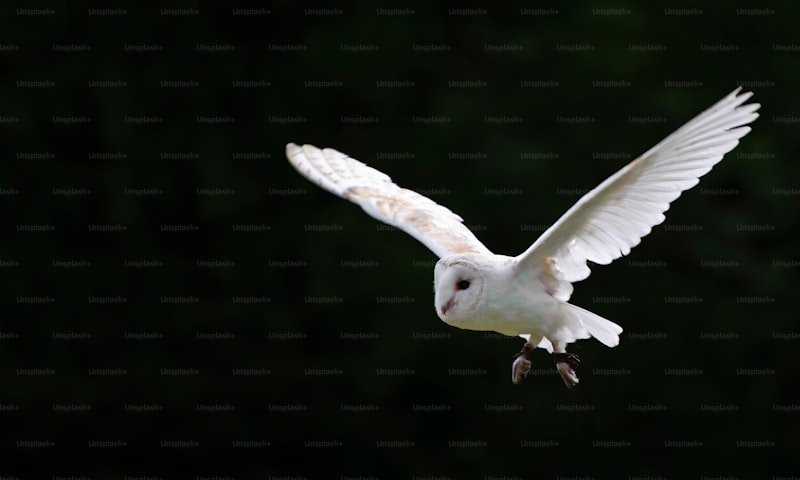Have you ever wondered how birds achieve the marvel of flight with such grace and precision? The biomechanics of avian flight reveal a fascinating interplay of anatomy, physics, and evolutionary adaptation. Birds, unlike any other creatures, have evolved specialized adaptations that enable them to conquer the skies with efficiency and agility.
At the heart of avian flight biomechanics lies the structure of the bird’s wings. Each feathered wing is a marvel of lightweight yet sturdy construction, optimized for both lift and maneuverability. The wingspan and shape vary significantly among different bird species, each tailored to their specific flight needs – from the long, soaring wings of eagles to the rapid, agile wings of hummingbirds.
The key to understanding how birds stay aloft lies in their ability to generate lift. When a bird flaps its wings, it creates a difference in air pressure that allows it to defy gravity. This process involves complex interactions between airflow dynamics and the bird’s muscular strength. For instance, birds like the albatross have mastered the art of dynamic soaring, using wind currents to stay airborne with minimal energy expenditure.
Moreover, birds utilize their unique skeletal structure to enhance flight efficiency. Their hollow bones reduce weight while maintaining strength, enabling them to achieve the necessary lift-to-weight ratio for sustained flight. Additionally, birds have a highly efficient respiratory system that ensures their muscles receive ample oxygen during flight, supporting prolonged activity in the air.
Unraveling the Mysteries: The Biomechanics Behind Avian Flight
Let’s dive into the intricate mechanics that allow birds to take to the skies with such elegance and precision.
At the heart of avian flight is the concept of lift. Birds achieve lift through their specialized wings, which are shaped to create different pressures of air above and below them as they flap and soar. This aerodynamic principle is akin to how an airplane’s wings function, but with a remarkable twist – birds can adjust the shape of their wings mid-flight to optimize efficiency and control.
But lift is just one piece of the puzzle. For a bird to maneuver through the air, it must also contend with drag, the resistance of the air against its movement. This is where the streamlined bodies of birds come into play, reducing drag and allowing them to glide swiftly through the sky.
And let’s not forget about thrust – the force that propels birds forward. It’s generated primarily by the powerful muscles of their breast and wings, which contract and relax in a coordinated dance during each beat of flight. This continuous motion provides the forward momentum that allows birds to navigate their aerial habitats with agility.
Interestingly, birds have also evolved skeletal adaptations that contribute to their flight prowess. Their bones are lightweight yet strong, with air cavities that further reduce weight without compromising structural integrity. This skeletal efficiency is crucial for maintaining the balance between weight and strength – essential for sustained flight over long distances.
Moreover, feathers play a pivotal role beyond mere aesthetics. They not only aid in flight but also provide insulation, regulate body temperature, and serve as a means of communication through displays of color and patterns.
In essence, avian flight is a masterpiece of natural engineering, blending physics, biology, and evolution into a seamless display of aerial artistry. The next time you watch a bird take flight, remember the intricate biomechanics at work – a testament to the wonders of nature and the limitless possibilities of adaptation and survival.
From Feathers to Air: Understanding Avian Flight Through Biomechanics
Have you ever wondered how birds effortlessly soar through the skies, defying gravity with grace and precision? The secret lies in the intricate science of avian biomechanics. Birds have evolved specialized adaptations that make flight not just possible but incredibly efficient.
At the heart of avian flight is the design of their feathers. Each feather is meticulously structured to serve multiple purposes. The primary feathers at the tips of the wings provide the necessary lift and thrust required for flight. They act like miniature airfoils, generating lift as air flows over and under them. This aerodynamic principle allows birds to generate enough force to overcome the pull of gravity.
Biomechanics also plays a crucial role in how birds maneuver through the air. The arrangement of muscles and bones in their wings allows for remarkable flexibility and control. Birds can adjust the shape and orientation of their wings mid-flight, altering their aerodynamic profile to navigate through different air currents seamlessly. This ability is akin to a skilled pilot adjusting the flaps and rudders of an aircraft to maintain stability and direction.
Moreover, the lightweight structure of birds’ skeletons contributes significantly to their flight capabilities. Hollow bones reduce overall weight without compromising strength, enabling birds to achieve and sustain flight over long distances. This anatomical adaptation is analogous to using advanced lightweight materials in aerospace engineering to enhance aircraft performance.
In essence, avian flight is a marvel of biomechanical engineering, blending form and function to perfection. By studying the biomechanics of birds, scientists gain insights that inspire innovations in aviation and robotics. Understanding how birds harness the forces of nature to defy gravity offers profound lessons in efficiency and elegance in motion.
Next time you marvel at a bird gliding effortlessly overhead, remember that its flight is a testament to the exquisite harmony between biomechanics and nature’s design.
Flight Engineers: How Birds Perfect the Art of Aerial Navigation
Birds, the feathered marvels of nature, exhibit unparalleled mastery in the art of aerial navigation. From the majestic eagle soaring high above mountains to the agile hummingbird darting between flowers, each species has evolved unique adaptations that enable them to traverse the skies with astonishing precision.
One of the most remarkable aspects of bird flight is their ability to navigate across vast distances using a variety of cues. Unlike human pilots who rely on instruments, birds primarily use a combination of visual landmarks, celestial cues, and even Earth’s magnetic field to orient themselves during flight. This innate sense of direction allows them to migrate thousands of miles between breeding and wintering grounds without getting lost.
Navigation isn’t just about knowing where to go; it’s also about how to get there efficiently. Birds optimize their flight paths to conserve energy, utilizing updrafts and tailwinds to reduce the physical exertion required for long journeys. This efficiency is crucial for survival, especially during challenging migrations or when searching for food across expansive territories.
Each bird species has evolved unique adaptations tailored to its specific ecological niche. For instance, seabirds like albatrosses have long, narrow wings ideal for gliding effortlessly over ocean winds, while forest-dwelling species like woodpeckers possess short, sturdy wings suited for agile maneuvering through dense foliage.
Moreover, birds exhibit exceptional agility and precision in flight, capable of executing complex aerial maneuvers with grace. This agility is not merely for spectacle but serves practical purposes such as evading predators or capturing elusive prey in mid-air.
The aerial navigation abilities of birds are a testament to millions of years of evolutionary refinement. Their adaptations for efficient flight, precise navigation, and graceful agility continue to captivate scientists and enthusiasts alike, offering profound insights into the wonders of natural engineering. As we observe these avian marvels soaring overhead, we are reminded of the extraordinary capabilities that have allowed birds to conquer the skies with unparalleled mastery.
Wings of Wonder: Exploring the Science of Avian Flight Mechanics
Have you ever marveled at the effortless grace with which birds soar through the sky, seemingly defying gravity? The science behind avian flight mechanics is a testament to nature’s ingenious engineering. Understanding how birds achieve flight involves delving into a world where aerodynamics meets evolutionary adaptation.
At the core of avian flight is the mastery of aerodynamic principles. Birds’ wings are meticulously designed to generate lift and thrust efficiently. Unlike airplanes with rigid wings, birds possess flexible feathers that adjust mid-flight, allowing for dynamic control over speed and direction. This adaptability enables them to navigate diverse environments, from open skies to dense forests.
The shape of a bird’s wing is crucial to its flight capabilities. Wings vary significantly across species, each optimized for specific flight patterns and behaviors. For instance, raptors like eagles have broad wings that provide excellent lift for soaring, while hummingbirds boast rapid wing beats that enable agile maneuvers during hovering.
Moreover, the concept of wing loading plays a pivotal role in flight dynamics. It refers to the ratio of a bird’s body weight to its wing area. Birds with lower wing loading, such as albatrosses, can glide effortlessly over long distances, leveraging air currents to conserve energy. In contrast, higher wing loading in birds like pigeons facilitates rapid take-offs and precise aerial maneuvers.
Beyond physical attributes, avian flight mechanics are deeply intertwined with evolutionary biology. Over millions of years, birds have evolved specialized adaptations that enhance their flight efficiency. From hollow bones that reduce weight to intricate respiratory systems that support high metabolic demands, every aspect of avian anatomy contributes to their airborne prowess.
The science of avian flight mechanics is a captivating blend of physics, biology, and evolutionary history. By unraveling the mysteries of how birds achieve sustained flight, scientists not only gain insights into natural design but also draw inspiration for innovations in aerodynamics and robotics. Next time you spot a bird in flight, take a moment to appreciate the wonder of nature’s aerial acrobats.
Nature’s Aerodynamics: Decoding the Biomechanics of Bird Flight
Have you ever wondered how birds effortlessly glide through the sky, soaring with grace and precision? The secret lies in the intricate biomechanics of their flight, a marvel of evolution and engineering. Let’s dive into the fascinating world of bird aerodynamics to uncover what makes their flight so exceptional.

Bird flight can be likened to a carefully choreographed dance of physics and biology. At its core, the shape and structure of a bird’s wings play a pivotal role. Unlike fixed-wing aircraft, birds have wings that are not only capable of flapping but also adjusting their shape mid-flight. This flexibility allows birds to generate lift and thrust efficiently, adapting to different flight conditions from hovering in place to swift aerial maneuvers.
The concept of lift is crucial in understanding bird flight. As a bird flaps its wings, it creates a pressure difference between the upper and lower surfaces of the wings. This pressure differential generates lift, pushing the bird upwards against the force of gravity. The shape of the wings, with a curved upper surface and a flatter lower surface, enhances this effect, maximizing lift while minimizing drag.
Moreover, birds are masters of energy conservation during flight. They use a variety of techniques such as gliding and soaring on updrafts to minimize the energy expended in flapping their wings. This efficiency is particularly evident in migratory birds that travel thousands of miles without frequent rest stops.
Interestingly, the size and shape of a bird’s body also influence its flight dynamics. Larger birds like eagles rely on strong, broad wings for soaring effortlessly over long distances, while smaller birds such as hummingbirds exhibit rapid wingbeats to hover near flowers for nectar.
Bird flight is a remarkable testament to the principles of aerodynamics and biomechanics in nature. By studying how birds achieve flight, scientists gain insights that can inspire advancements in aircraft design and robotics. Next time you spot a bird in flight, take a moment to marvel at the ingenuity of nature’s aerodynamics in action.
Beyond Feather and Bone: The Intricate Mechanics of Avian Aviation
Have you ever marveled at the graceful flight of birds, wondering how they achieve such aerial mastery? Beyond mere feather and bone lies a complex interplay of biology and physics that enables birds to take to the skies with unmatched agility and efficiency.
At the heart of avian flight mechanics is the remarkable structure of feathers. These seemingly delicate plumes are meticulously designed for both lift and maneuverability. Each feather is composed of a central shaft with barbs branching off, forming a lightweight yet durable framework. Imagine these feathers as miniature airfoils, generating lift as air flows over and under them during flight.

But it’s not just about feathers; bones play a crucial role too. Unlike the dense bones of mammals, bird bones are hollow and lightweight, akin to a carefully engineered scaffold. This reduction in weight allows for easier flight without compromising structural integrity. Think of it as nature’s way of balancing strength with aerodynamic efficiency.
Furthermore, birds possess highly efficient respiratory systems. Their lungs are interconnected with a system of air sacs that extend even into their bones. This unique setup ensures a continuous flow of oxygenated air throughout their bodies, powering their muscles during sustained flight. It’s like having an internal combustion engine optimized for aerial acrobatics.
Interestingly, birds have mastered the art of wing morphing – altering the shape of their wings depending on flight requirements. Whether it’s soaring high on thermal currents or executing intricate aerial maneuvers, birds can adjust their wing shape to maximize lift and control. It’s akin to a pilot adjusting the flaps and ailerons of an aircraft mid-flight, all instinctively controlled by the bird’s musculature.
In essence, the mechanics of avian aviation are a marvel of evolutionary engineering. From the microstructure of feathers to the macroscopic adaptation of wing shape and bone structure, every aspect is finely tuned for the demands of flight. Next time you witness a bird in flight, remember the intricate mechanics at play that enable these creatures to defy gravity with such elegance and efficiency.
Flight in Focus: The Evolutionary Secrets Hidden in Bird Biomechanics
Have you ever wondered how birds effortlessly glide through the sky, their movements a marvel of nature’s engineering? The secrets lie deep within their biomechanics, a complex interplay of form and function honed over millions of years of evolution.
At the heart of bird flight is their skeletal structure, lightweight yet incredibly strong, designed to minimize weight while providing the necessary support for flight. Their bones are fused and hollow, resembling a carefully crafted framework that balances durability with efficiency.
But it’s not just their bones that contribute to their aerial prowess. Feathers play a crucial role, acting as both insulation and aerodynamic aids. Each feather is meticulously arranged to reduce drag and generate lift, allowing birds to maneuver through the air with precision and grace.
Muscles also play a pivotal role in bird flight, powering their wings through a complex series of movements. Unlike human muscles, which primarily move in linear directions, bird muscles are designed to work in concert, enabling rapid adjustments in flight speed and direction.
Furthermore, the respiratory system of birds is uniquely adapted to meet the demands of flight. Their lungs are efficient and interconnected with air sacs throughout their body, ensuring a continuous flow of oxygenated air even during the most strenuous flights.
When we observe birds in flight, we witness a symphony of adaptations finely tuned by evolution. Their ability to soar across vast distances, navigate through intricate environments, and survive in diverse habitats is a testament to the power of natural selection.
In essence, the study of bird biomechanics unveils not only the marvels of flight but also the evolutionary pathways that have shaped these incredible creatures. From the delicate balance of aerodynamics to the efficiency of their respiratory systems, every aspect of bird flight reflects millions of years of adaptation and refinement.
Frequently Asked Questions
How do bird wings generate lift and thrust?
Learn how bird wings create lift and thrust through a combination of aerodynamic principles. Understand the unique shape and movement of wings that generate upward force (lift) by creating low pressure above and high pressure below. Discover how wing flapping produces forward motion (thrust) akin to an airfoil in flight.
What adaptations enable birds to fly?
Learn about the adaptations that allow birds to fly, including lightweight bones, efficient respiratory systems, and aerodynamic feathers. Discover how these unique features contribute to their ability to soar through the skies effortlessly.
How do birds conserve energy during flight?
Discover how birds conserve energy during flight through efficient wing morphology, aerodynamics, and specialized flight techniques. Learn how these adaptations enable birds to maximize endurance and minimize energy expenditure.
What role does wing shape play in avian flight?
Wing shape influences flight efficiency and maneuverability in birds. Streamlined, pointed wings reduce drag and are suited for fast, long-distance flight, while broader, rounded wings offer better lift and control for short bursts and maneuvering.
What factors influence the efficiency of avian flight?
Discover the key factors that impact the efficiency of avian flight, including wing shape, body size, and flight speed. Explore how these factors contribute to birds’ ability to navigate and sustain flight with optimal energy use.


